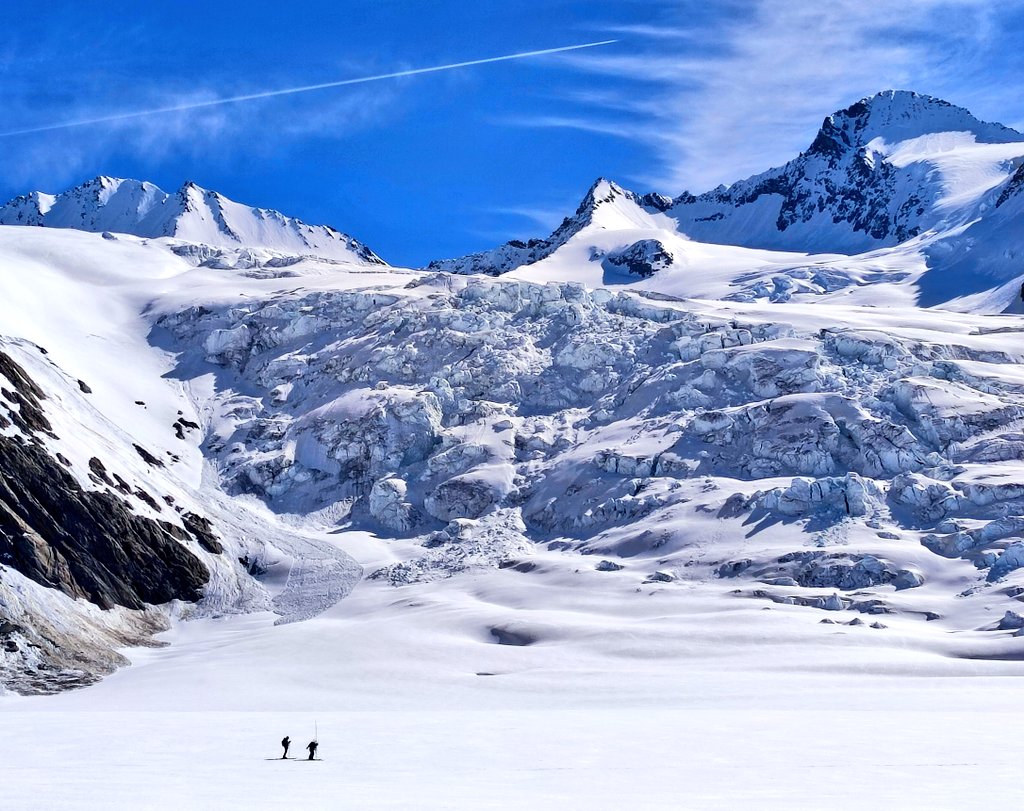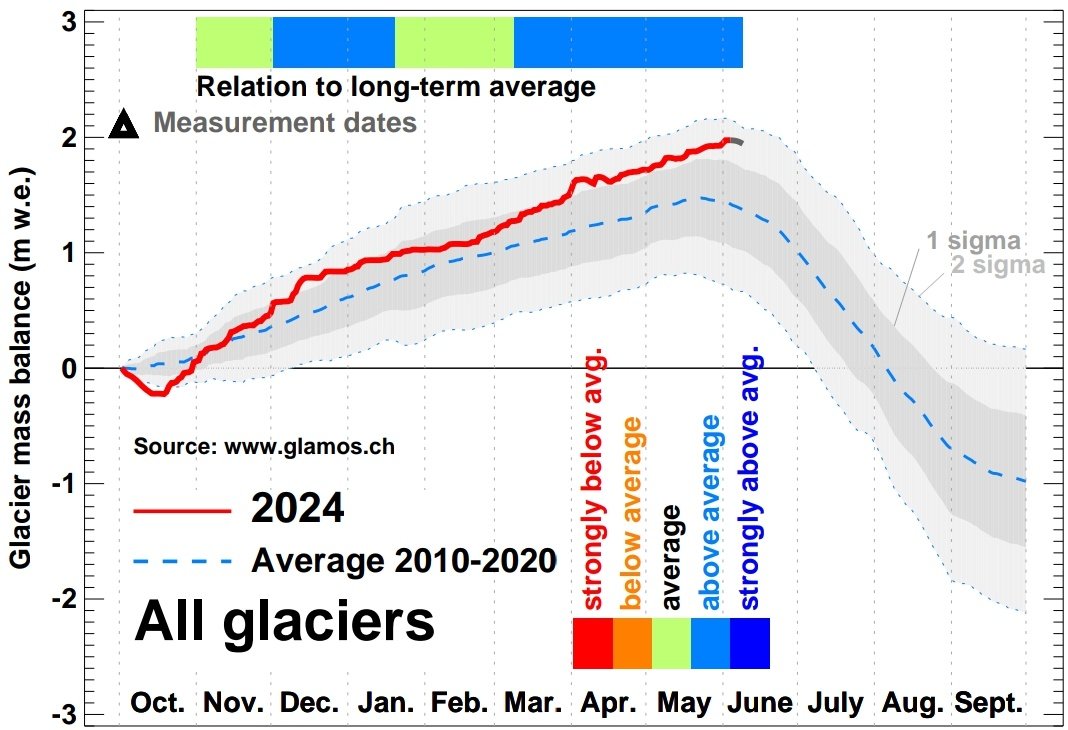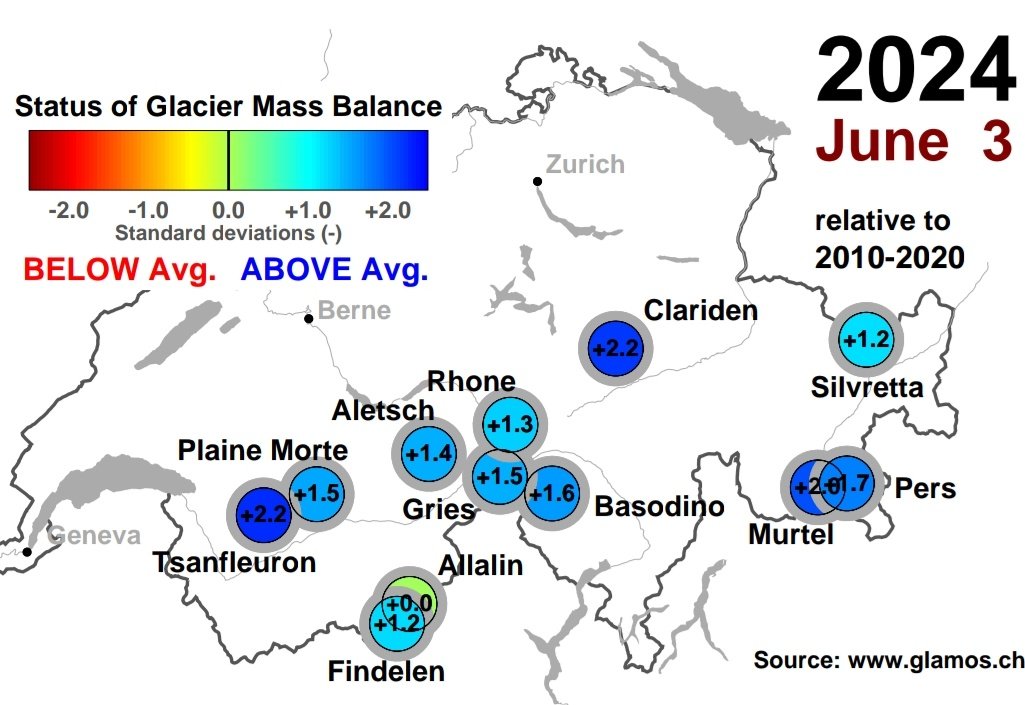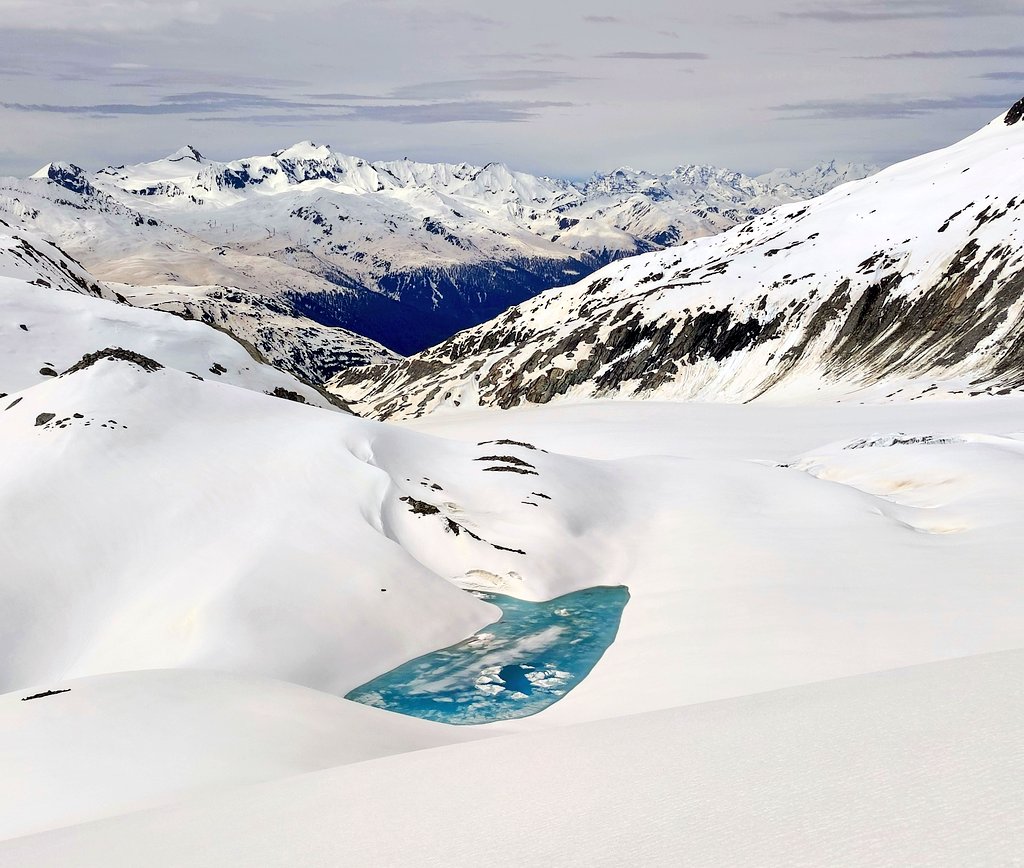
According to a report by Glacier Monitoring Switzerland (GLAMOS), the snow cover on Swiss glaciers at the end of the 23/24 winter season is between 3-6 meters (10-20 feet) high. GLAMOS took measurements from 12 Swiss glaciers between April and May 2024. The results indicate a snow cover across the Swiss Alps of 31% more than the 10-year average snow depth from 2010 to 2020. Dr. Matthias Huss, glaciologist at the Federal Technological University (ETH) in Zurich, Switzerland, said, “This year’s weather is a blessing for Swiss glaciers so far. Their state compared to the reference in early June has further improved and is substantially above average in all regions.”
GLAMOS, which is a program at the glaciology department at the ETH, takes these measurements each year as part of a multi-decade study that aims to understand the effects of shifts in meteorological forcing on glacier mass change. These measurements have been taken for 15-20 years, and help estimate the potential impact of subsequent summer melting on overall ice volume loss. The measurements in the report were updated with further measurements from two glaciers in early June, which had been inaccessible in April and May. The updates are not yet included in the report, but Dr. Huss shared the updated graphs on his Twitter (X) social media account.

GLAMOS takes between 50 and 200 individual snow depth measurements, to estimate the snow depth as accurately as possible. In addition, the density of the entire snow column down to the ice surface is determined by means of snow coring at one to five sites per glacier, depending on the elevation range. These intricate measurements are used to calculate the equivalent water mass and spatially extrapolated across the whole glacier.
The measurements from this season are moderately to strongly above average for all sites across the Swiss Alps. To best express the results across all glaciers, the institute calculates standard deviations from the 10-year average from 2010-2020. The results for the 23/24 winter are between 0.0 and 2.2 standard deviations above their mean values, representing a surplus of snow between 12% – 60%.

The highest deviations from the mean correlate with the prevailing weather patterns in the 23/24 winter season in Switzerland. Glaciers in the cantons Ticino and Engadin (Basòdino, Gries, Murtèl, and Pers Glacier) show strongly above-average mass balances, sometimes even the highest values that have ever been recorded since the beginning of the respective measurement series. Glaciers in the west of Switzerland, as well as on the northern flank of the Alps show extremely high winter mass balances, also resulting in record values for Tsanfleuron and Clariden Glacier. Whereas glaciers in the Southern Valais/Wallis, as well as Central Switzerland (Findelen, Allalin, Aletsch, and Rhone Glacier) show snow depths above average but within about one standard deviation from the mean.
Aside from snow depth, the institute also evaluates snow density as it is an important variable in determining the winter mass balance of glaciers. Snow densitiy at the end of the 23/24 winter season are above average which is likely due to higher compating due to warm temperatures throughout the winter.
Dr. Huss estimates that the peak snow depth was reached on June 3, after the recent snow falls across the Swiss Alps. From now on until about October, snow melt will dominate in the European Alps. The hope is that the additional snow cover will provide insulation to the receding glaciers. Snow cover on a glacier acts like a protective shield, insulating the glacier from heat, and thus slowing down the rate at which it melts. The Swiss glaciers melted at a record pace in the last two winter seasons due to below average snow cover at the end of the winter season and record temperatures during the summer season.
